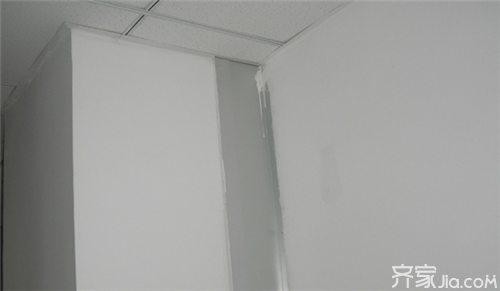
[Structure of deformation joint]
1. Double-wall or double-column on both sides of the deformation joint - The method is simple, but easy to make the structural foundation on both sides of the joint eccentric (for the expansion joints can not be disconnected because of the foundation, so this problem can be eliminated).
2. Both sides of the deformation joint can be picked out with the horizontal member cantilever in the direction of the deformation joint. The base part is easy to disengage the distance. It is more convenient to locate the joint, and is especially suitable for settlement joints.
3, with a simple support of horizontal components for the transition process - used to connect the two buildings of the overhead walkway, etc., but in the earthquake-proof area should be used with caution.
[ Types of deformation joints]
Deformation joints can be classified into three types: expansion joints, settlement joints and seismic joints.
1. Expansion Joints: Expansion and shrinkage of building components will occur due to changes in temperature and humidity. To this end, vertical slits are usually provided at appropriate locations in the building, and the walls, floors, roofs, and other components of the houses are separated from the foundation to separate the building into several independent parts. In order to overcome the large temperature difference provided by the seam, the foundation may not be disconnected, breaking from the basic top surface to the roof along the structure.
2. Anti-seismic joints: The foundations may be inseparable in order to make the buildings more regular in order to facilitate the structural anti-seismic settings. Its purpose is to separate large buildings into smaller parts to form relatively independent anti-seismic units to avoid damage caused by the earthquake as a whole.
In seismic fortification areas, settlement joints and expansion joints must meet the requirements of seismic joints.

3. Settlement joints: Refers to the difference in the height of the same building, the uneven distribution of the upper load, or the construction structural joints set in order to avoid the uneven settlement of the wall or other structural parts when it is built on different foundation soils. Settlement joints divide the building into several paragraphs and form a self-contained system. They do not connect from the foundation, the wall, the floor to the roof. Sewing width is generally 30 ~ 70 mm. Completely divides a building or structure into vertical joints from the foundation to the top. In order to avoid non-uniform sinking and cracks. It is usually set between the height of the building, the loads or the parts where the bearing capacity of the foundation varies greatly, and the joints between the old and new buildings.
Xiao Bian epilogue: The above introduced the role of deformation joints , I hope to be helpful to everyone. For more relevant knowledge, please continue to pay attention to this website information platform. Follow-up will present more exciting content for everyone.
Expansion joint leaking expansion joint construction service floor leaking building density
PVA sponge polishing wheel adopts special synthetic resin to enhance its wear resistance
And the grinding force, by the existence of special air hole, can quickly eliminate the dust, no packing and hair
Heat phenomenon, avoid heat burn workpiece, suitable for long time grinding work. The binder is soft and slow
Impact, no deep blemishes on the grinding surface.
Use of PVA grinding wheel :1. It is easy to heat up when using general sand flower and sand cloth
Used for grinding stainless steel, aluminum, copper, iron, wood, gemstone, marble, glass, graphite
Products, urea products and leather, etc. PVA sponge grinding wheel is the most suitable. In addition, it can be eliminated
Burr, dirt, rust, etc.
2. Using PVA sponge grinding wheel, you can get beautiful grinding surface and saving after a short time of work
Omitted number of projects. For example, all kinds of metal grinding, copper mixing cylinder (centerless polishing), watchcase,
Grinding of watchband, gemstone and marble before plating or polishing.
Mounted Point,Polishing Mounted Point,Grinding Mounted Points,Mounted Point Grinding Wheel
Henan Jinlun Superhard Material Co., Ltd , https://www.jinlunsuperhard.com